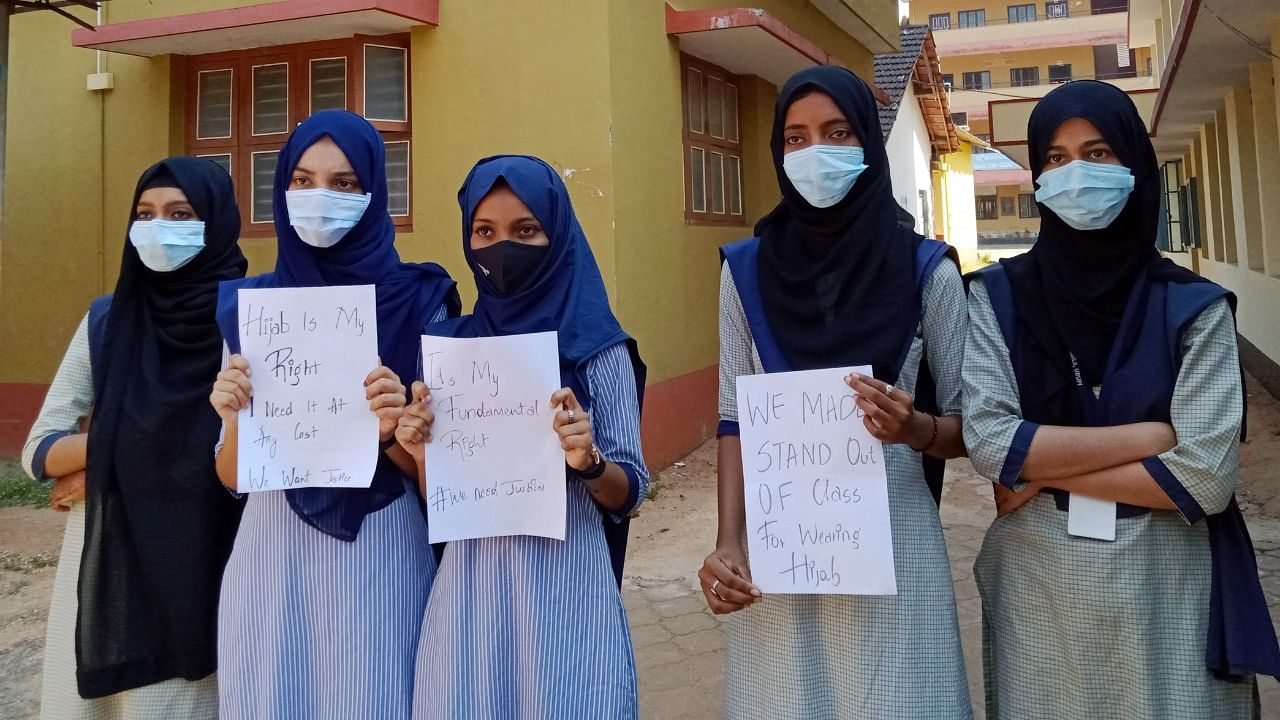
What women wear.
This is something that has been the target of rules, diktats, sly comments and harsh punishments for much of recorded human history.
And this continues right up to the present day.
Of late, there has been conflict in Karnataka’s Udupi over the wish of some young women students to wear a headscarf in class. They have faced resistance to this from authorities and their own college mates.
Also Read | The Udupi girls and other dangerous Muslim women
This is not the first time that this has happened in the state. Back in August 2009, I travelled to the Dakshina Kannada district to meet a young woman, Ayesha, who was facing the same pressure for the same reason. Ayesha was then a first-year student at SVS College in Bantwal, near Mangaluru. She was not allowed to enter her class wearing a headscarf. She kept returning each day — hoping that she would be allowed to attend classes in her chosen attire. But that didn’t happen, and in an increasingly difficult atmosphere, Ayesha left the college.
In 2022, over 12 years on, the Udupi students who want to wear the headscarves in class are facing a similar situation to the one faced by Ayesha in 2009.
The authorities in Ayesha’s college indicated that they personally had no issue with a student wearing the headscarf in class but that “rules were rules”.
The SVS College Principal at that time, Sitaram Mayya, said, “It is one rule for all students. She is the only one not following the rule.”
Ganesh Prabhu, who was then Correspondent of SVS College, said,
“We admire Ayesha’s rebellious spirit; we just wish it had been used for nation-building instead.”
Maybe even harder to deal with for these students is the opposition from their peers. For Ayesha, too, over a decade ago, many of her college mates were against the headscarf she wanted to wear. She said that they had told her “If you wear the scarf, we will wear saffron shawls.” This saffron shawl angle has surfaced in 2022 also.
Back in 2009, a non-Muslim student at the college told me why they were against wearing of the headscarf in the classroom. “They look different from the others when they wear burkhas. You should not display religion.”
I spoke to other Muslim girl students from the college on that visit -- many of whom came to college in burkhas which they took off after entering the college. Some of them said they also wanted to wear their headscarf to class and had not told their families that they needed to remove them once on the college campus.
The coastal region of Karnataka does have an unfortunate history of communal tensions. But adding to the complicated situation, these incidents are also mixed inextricably with gender.
Dress codes for women students are not that unusual. Colleges in big cities like Bengaluru and other towns like Mysuru — even colleges that admit only girls — have at various stages told their day scholars and hostelites what they can and cannot wear. In some colleges, jeans were banned as well as sleeveless and ‘short’ tops. Tops were not supposed to be tucked into trousers. The objective here was to make sure the young women students were covered up enough for ‘modesty,’ to make sure their clothes were not ‘too revealing.’ But girl students who want to cover themselves even further with the hijab are also facing criticism.
Opposition to the headscarf in countries like France — which has lately seen objections to the wearing of headscarves by sportswomen too — is ostensibly because the coverings are seen as oppressive to women and part of too conspicuous a display of religious symbols in public. Others demand the right to wear these headscarves while playing sport — or indeed anywhere they choose. They see the opposition to headscarves as part of religious intolerance, particularly against Muslims. The same debate had surfaced when some places in France banned the burqini -- swimwear that covered far more of the wearer’s body than other swimsuits of the day.
The common thread connecting those who tell women to cover up or not to cover up quite so much is the belief that they have the right to tell a girl or a woman what she can or cannot wear.
Bring religion into the mix against a backdrop of growing intolerance, and a simple headscarf stands for so much more.
A hope – that another 12 years down the line, this story is still not being played out in our colleges. And that women can peacefully wear whatever they feel comfortable wearing.
(The writer is a senior journalist with NDTV)